Ah yes, kitten season is officially upon us once again. With it comes all the cute descriptions on rescue sites and shelters attaching “probable” breeds to babies that sorta, kinda look like them — all in a bid to make them seem more rare and thus higher in demand for adoption. However, that isn’t how it works. A coat color or a fur type alone does not dictate what breed something is.
Siamese is a breed in and of itself — it is based not just on coat color but structure, conformation, pedigree, and other genetics. So having points alone does not make a cat a Siamese nor mean they have a Siamese parent, or any other purebred lineage.
Get ready to learn some really nerdy stuff!
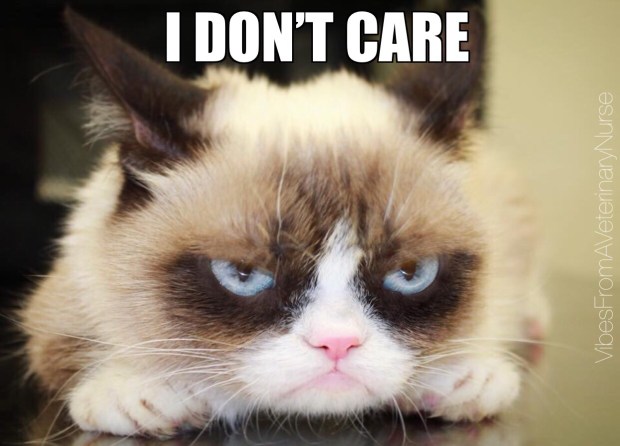
Coat coloring and why it may not mean a kitten/cat is an actual Siamese:
The actual pointed coat coloring that Siamese and other breeds are known for (as well as rats, mice, and rabbits) is simply a recessive form of partial albinism called “Himalayan”. It has nothing to do with the specific breed of cat called Himalayan, as that is something entirely separate — other than the fact that the Himalayan breed ALSO has the Himalayan genetic mutation. 😊
The Himalayan mutation alters the enzyme responsible for melanin production, which is called Tyrosinase.
Melanin: any of various black, dark brown, reddish-brown, or yellow pigments of animal or plant structures (such as skin or hair). [1]
Tyrosinase: a copper-containing enzyme that promotes the oxidation of phenols (such as tyrosine) and is widespread in plants and animals. [2]
Tyrosine: a phenolic amino acid (C9H11NO3) that is a precursor of several important substances such as epinephrine and melanin. [3]
The mutation restricts the ability of tyrosinase to oxidize tyrosine only at cooler temperatures; warmer temperatures deactivate the enzyme. This results in little to no melanin production within each hair follicle located over the warmer areas of the body (chest, abdomen, upper legs, neck), and more melanin production in hair follicles over cooler areas of the body (ears, face, paws, tail — the “points”).
Because this mutation only creates partial albinism, it overshadows the normal base coat color phenotype that is located on a different allele — i.e. black, blue, red, etc. — while still allowing it to be visible. This is similar to how a person with albinism is still genetically a redhead, or black, or has brown eyes, etc. Since only some areas have the albinism activated, we can still see the cat’s normal coat phenotype in the other areas where it is inactivated.
Phenotype: the observable properties of an organism that are produced by the interaction of the genotype and the environment. [4]
Genotype: A set of alleles that determine the expression of a particular characteristic or phenotype. [5]
Allele: One of a pair of genes occupying a specific spot on a chromosome. That spot is called a locus. [6]
For example, a Seal point cat is actually a black cat with the Himalayan mutation altering how the melanin is developed and displayed. A Chocolate point is actually a brown cat, a Flame point is actually an orange cat, etc. Blue points and Lilac points are dilute forms of black and brown; they require an additional separate allele mutation in addition to the albinism mutation in order to make them dilute. Lynx points, Tortoiseshell (Tortie) points, and Showshoes have yet another additional gene being expressed that gives them their stripes, orange streaks, and masks/socks. So for example, a Tortie Blue Point with Snowshoe masks/socks would have THREE mutations creating her pattern. These additional mutations are the same genes as in non-Himalayan mutation cats (“normal” cats), just expressed differently. I won’t go into the full cat coat and color genetics explanation, as that will have to be another article on its own!
The Himalayan mutation has a simple recessive hereditary pattern:
Recessive Inheritance: When a trait is recessive, an individual must have two copies of a specific allele to express the trait. Recessive alleles are denoted by a lowercase letter (“a” versus “A”). Only individuals with an “aa” genotype will express a recessive trait; therefore, offspring must receive one recessive allele from each parent to exhibit a recessive trait. [7]
Heterozygous: containing two different alleles [or only one copy] for a particular trait at the same locus. [8]
Homozygous: containing two copies of the same allele for a particular trait, located at similar positions (loci) on paired chromosomes.
In a diploid organism, there are two sets of chromosomes. One of the sets comes from the biological mother and the other set from the biological father. Each maternal chromosome has a corresponding paternal chromosome to match with based on their loci. When the loci in the matching chromosomes bear the same alleles, it is described as homozygous. When the loci only contain one of the alleles, it is described as heterozygous. [9]
This means that it can be genetically carried WITHOUT being phenotypically visible (Heterozygous). Thus two parents of any average coat pattern/type would simply need to each carry one hidden copy of the Himalayan gene to potentially have babies with the visible Himalayan coat pattern. The baby with the mutation would be the Homozygous form with 2 copies of the gene, one inherited from each parent. Since genetics are somewhat of a dice roll when it comes to reproduction, each individual offspring has a different chance of inheriting one or both copies of any given gene. This is why it is possible for babies with the Himalayan mutation to pop up in litters that also have “normal”-appearing siblings.
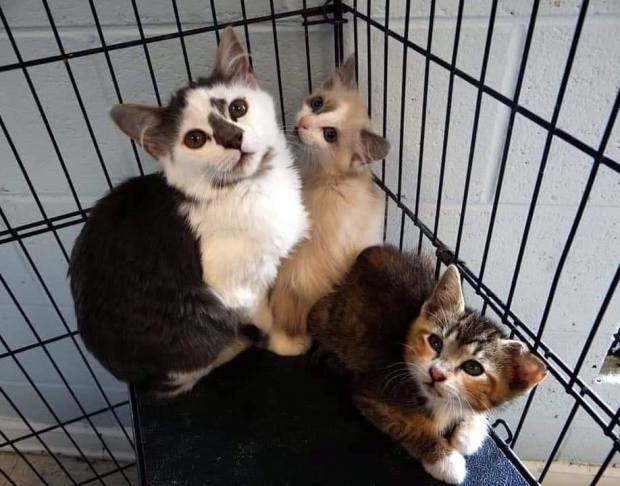
A sweet trio of babies at our local shelter.
The Himalayan gene can be carried through the parental lines for decades without any expression until the carrier is mated with a fellow carrier to create a Homozygous (visible) offspring. The trait also happens randomly in spontaneous genetic mutation during DNA replication in the first stages of embryonic development.
Have I lost you yet? Hang in there! If that isn’t cool enough…
The Himalayan mutation also provides these cats with their famous intense blue eyes. Yay, more science!
There are two layers inside the iris of mammalian eyes that determine what color the eyes are: the stroma and the epithelium.
In most cats, pigmented cells that produce melanin are scattered throughout these layers, although mostly in the epithelium. But for cats with the Himalayan mutation, there is little to no melanin production at all due to their albinism.
“But Jen! If there’s no color in a Siamese’s eyes, why do they appear blue?”
For the same reason Earth’s sky appears blue.
Of all the colors in the visible light spectrum, blue has the shortest wavelength. Colors with shorter wavelengths scatter easier than colors with longer wavelengths — which is a phenomenon called Rayleigh Scattering.
When sunlight streams through the sky, it is a mixture of many different colors of light. As we all know, all colors of the spectrum combine to form white light, and it can also be reversely broken down from white light into various color wavelengths.
Light such as red and orange travels in long, stretched-out, easy moving waves. It has no trouble passing between the millions of tiny particles that make up the sky. It slides between and around them in much the same way that a piece of thread easily glides through the eye of a needle without ever touching the sides. During most times of day, red and orange and yellow light waves, even green light waves, easily flow and move around the molecules and escape. You never see them. They are gone from the sky before you can even blink, and that is why you don’t see them.
However, unlike the other colors, blue light travels in short, tightly coiled waves. It’s somewhat like a frayed, frizzy thread refusing to go through that needle eye without repeatedly bumping into the sides and bunching up. If you’ve ever tried to thread a needle with a split end, you totally get this.
So Instead of sliding right past, blue light tends to hit all the tiny microscopic particles in the sky, bouncing around and eventually bouncing toward your eyes. Consequently, when you look at the sky during the day, usually you see all blue.
That said, we all know the color of the sky can change based on weather, time of day, etc. This all boils down to the concentration of particles in the sky. Add some smog or a bit of water vapor, and the sky becomes a more pale form of blue. Add more water vapor or urban pollution, and the sky soon appears almost white. During sunrise or sunset, the angle of the sun changes in relation to your position, and its light suddenly has to go through a MUCH thicker layer of atmosphere than it does at Noon — therefore there are an infinite number of additional particles present.
The crowding of these additional particles in the atmosphere then tightens the spaces through which light waves can pass. The red, orange, yellow, and green waves that normally glide around the particles have less room, and are now bouncing off these extra particles as only the blue waves usually do. Therefore not only threads of blue light are visible, but various other light wavelengths as well. When all wavelengths bounce equally, it becomes almost white. [10]
Phew! Now back to cats.
The same applies to the irises of cats with the Himalayan mutation. Because there is little to no melanin to otherwise interfere or reflect, white light bounces off the microscopic molecules in the melanin-lacking iris — and only the blue wavelength scatters around, eventually reaching our eyes to be seen.
Now, technically speaking, the shortest wavelength is actually the violet one. Blue is second shortest. So why don’t the sky and Siamese cat eyes appear violet to us? Simply because our human eyes just don’t see that color wavelength very well. Human physiology has no biological need to see this wavelength of color for survival, reproduction, etc. so we just don’t pick it up unless it is very intense and strong (like a flower or paint). So for us, blue wins. A bird or a bee looking at the sky or your cat’s eyes would very likely see a shade closer to violet, because they are designed to see that spectrum for biological reasons.
So why are there so many shades of blue among pointed cats?
This goes back to where I described how cats with this mutation have normal coat colors, just with partial temperature-dependent albinism applied. i.e. a Seal Point is a black cat with partial albinism, a Blue Point is a gray cat with partial albinism, etc.
Stay with me here!
Just like with their coat color, cats with the Himalayan mutation also carry the same genes for eye color as “normal” cats — again, overlaid by the albinism. Therefore a black cat with copper eyes becomes a Seal Point with the same copper eye gene. But since the eyes are a warm area of the body, the iris does not generate melanin as the enzyme is deactivated just like on warm areas of the body. Yet there are still microscopic amounts of pigment cells sitting there. Copper eyes have more pigment-making cells (melanocytes) than green eyes, yellow eyes, etc. — and although inactivated, the cells still exist.
These cells act like the “pollution” does in the sky I mentioned above, or the thicker atmosphere. They create a higher density of microscopic particles for light to bounce off of.
Therefore cats with the Himalayan mutation who have inactivated copper eyes will scatter more wavelengths than just blue. Their eyes will look very pale, whitish blue as all the wavelengths combine. Cats with inactivated green eyes will have very deep, dark sapphire blue eyes. Since non-albino cats have a wide variety of shades of copper, orange, gold, yellow, and green, it makes sense that the Himalayan mutation creates the same variety based on the number of cells present, but based on the blue wavelength spectrum!
This is also why most mammals are born with dark blue eyes. Their melanocytes have not yet formed, and this is why they change later on once the cells develop and begin working. This is why pointed cats are born with the same dark blue eyes then get lighter or brighter blue eyes as they grow. They also lack ocular melanocytes at birth as their non-albino cousins do, but as they develop them, the cells do not produce melanin as their cousins’ cells would. Then the light wavelengths begin hitting the inactive cells and so on and so forth. Voila! Lighter blue irises.
So what does all of this fancy-schmancy stuff mean?
What it boils down to is this:
The parents of any kitten/cat with colored points and blue eyes could just be run of the mill DSH or DLH cats; black or tabby or orange or grey or what have you, that happened to have an ancestor with the Himalayan mutation 50 years ago or 100 years ago OR had a random common mutation occur in their genetic code that happened to match with the same mutation in the mate they reproduced with.
As I mentioned above, this is why you can have a random pointed Himalayan mutation pop up in an otherwise normal DSH litter (what many people call a “Siamese” baby within an otherwise domestic litter). It doesn’t necessarily mean they had Siamese or any other purebred breed in their lineage, it just means the two parents carried the same genetic mutation and that individual kitten happened to inherit 2 copies in order to express the phenotype (remember the dice roll?). Underneath it all, that kitten is actually a black or gray or orange DSH with a form of albinism changing his/her coat color distribution.
It also means that the color you see in your cat’s eyes is completely unique to him/her, due to the individual number of microscopic cells in his/her irises creating specific scattered light wavelengths that combine to create his/her exact shade of blue. No other cat will have that same specific combination. ♥️
Phew!
So unless a cat has breed-specific traits/conformation, came from a specific breeder of that breed, and you know precisely what his or her pedigree is — their parents, their grandparents, their great-grandparents, etc. — proving purebred lineage, then they are not a Siamese, or a Tonkinese, or a Himalayan, or a Ragdoll…and are simply a beautiful DSH/DLH displaying the Homozygous form of a recessive gene at the C locus…a gorgeous mutt with an inherited coloration mutation. 😊
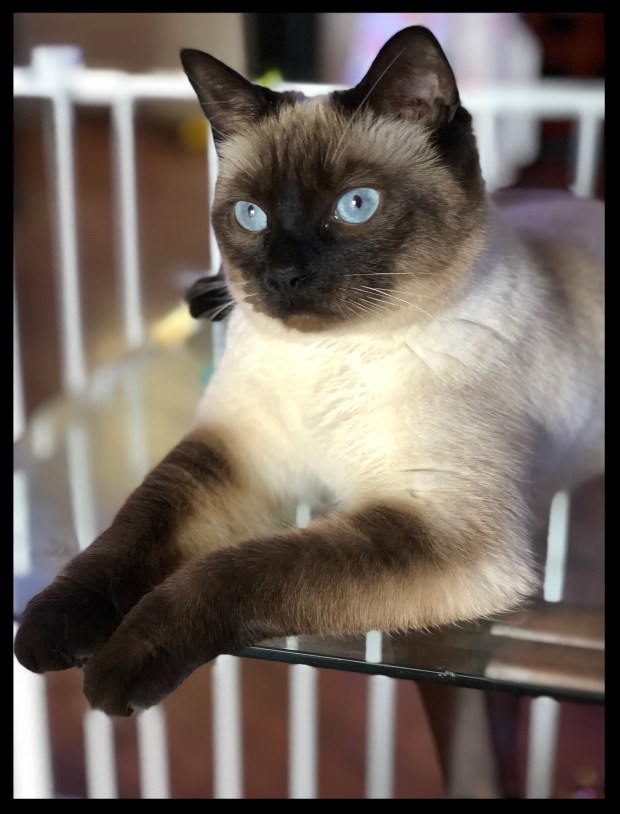
Lily, my beautiful mutt with a Homozygous pair of alleles for the Himalayan mutation at the C-locus. Rejected and brought back to the humane society twice within the same week at just 8 months old — she was clearly meant to be my sweet, smart, loyal girl. Third time’s a charm for this lady! Best $25 I’ve ever spent. 🐾
Here’s a fantastic peer-reviewed research article about the Himalayan mutation in mice if you’re into science and genetic chemistry:
Molecular basis of mouse Himalayan mutation.


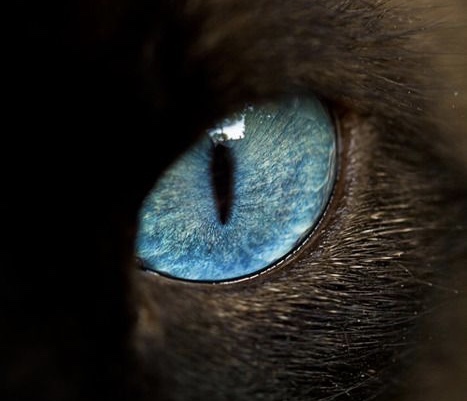
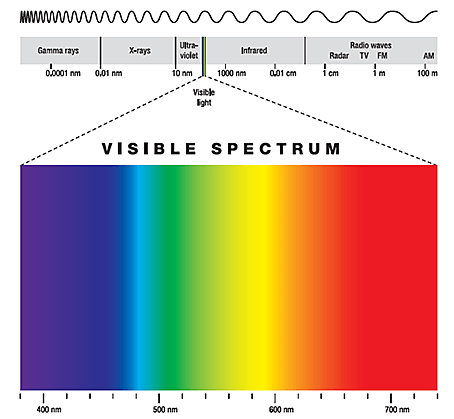
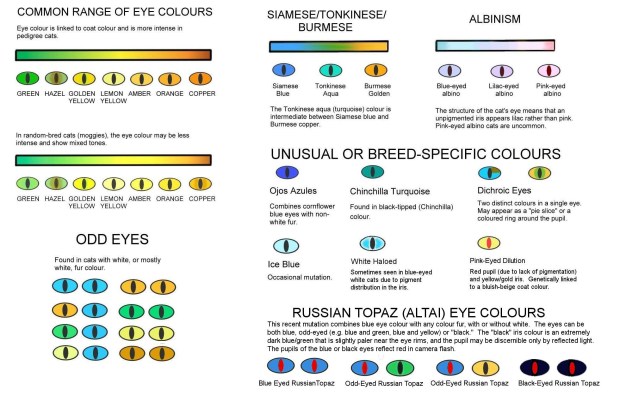
Thanks! So it is definitely breed-specific, but I say that with a caveat. Only Traditional Siamese (show type) are considered low shed and low allergen. They have super thin, sleek coats with almost no undercoat. Applehead Siamese are mostly like your average colorpoint DSH, with a much plusher, denser coat. Lily, in the pic above is very likely purebred Applehead based on color and type, and she absolutely dumps tons of fur compared to my two longhaired cats, one of which IS from purebred parents (Siamese and Himalayan). When you pet her, it flies like crazy. If allergies are an issue, Traditional is your best bet. Never a guarantee with even purebreds because each cat produces different levels of antigens in their saliva (which is what people are allergic to rather than the actual hair). That’s my next blog. LOL
LikeLike